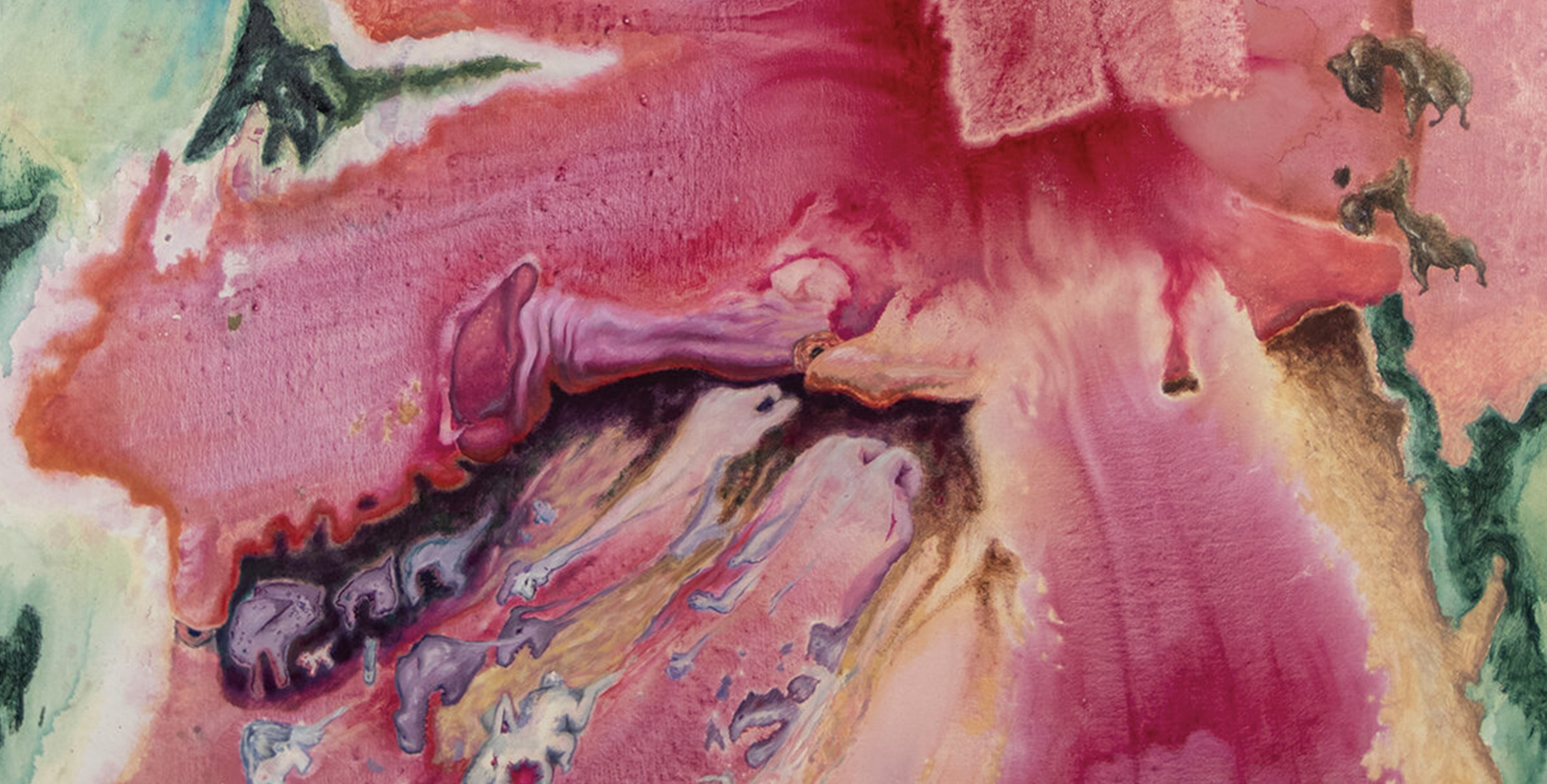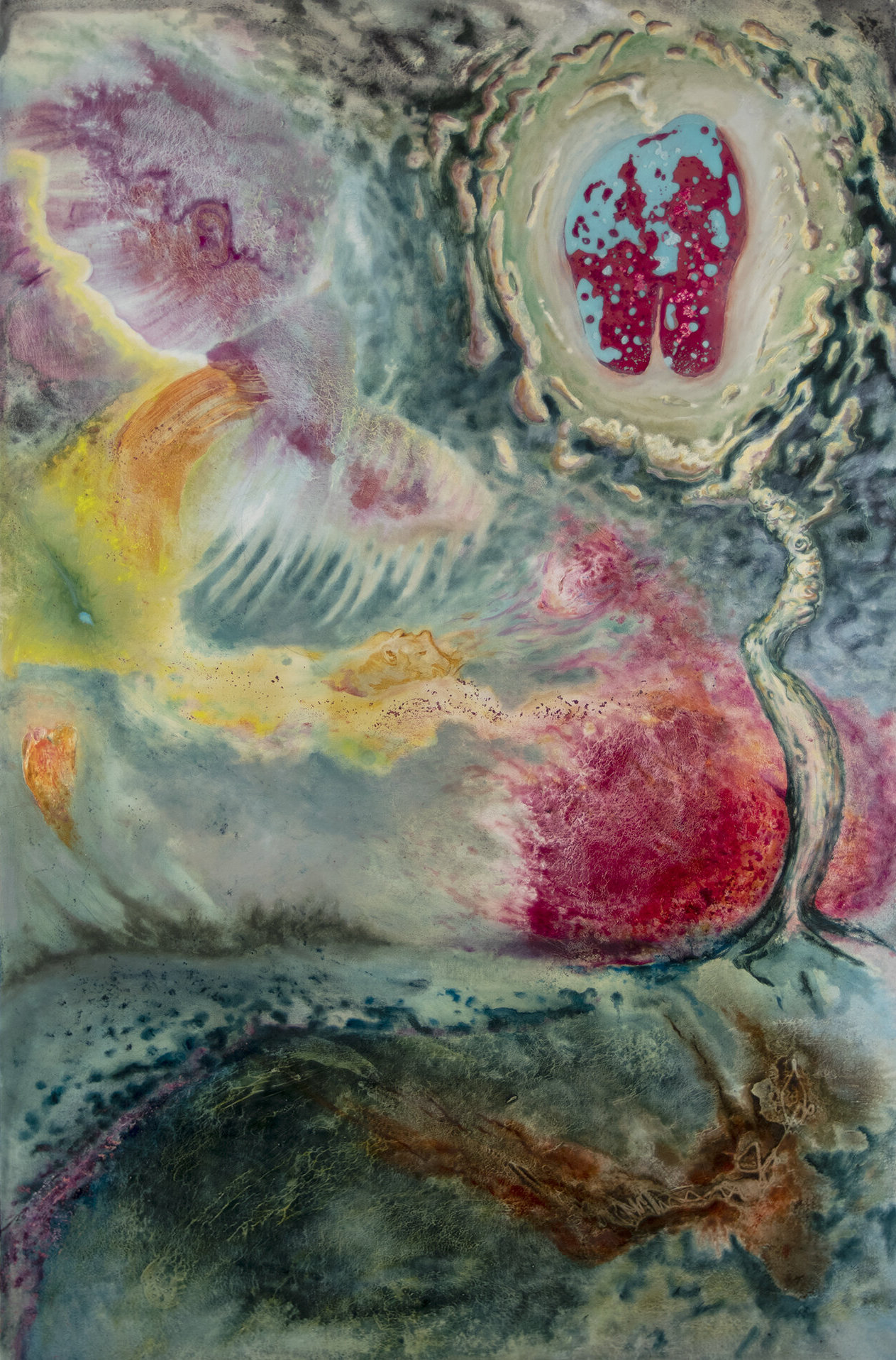BILLY DIETZ
Billy Dietz is a visual artist based in San Antonio, Texas. In his paintings and drawings, he depicts mental images from the mind of a fictional Catholic priest named Father Mark. He earned his BFA in Visual Arts from the University of North Dakota and his MFA in Studio Arts at the University of Tennessee. Dietz’ work has been exhibited at the North Dakota Museum of Art (Grand Forks, ND), Bemis Center for Contemporary Arts (Omaha, Nebraska), Collar Works (Troy, New York) and 6 ft Ap’Art Gallery (New York, NY), amongst others.

Grey State (GS): How did you come to find art; did art call to you in some sense? I'm curious at what point you approached artistry and what that initial relationship was.
Billy Dietz (BD): I had been making art ever since preschool. I remember back then my goal was to make the most imaginative and intense monster I could think of. In middle school I found out about Surrealism and was blown away by how creative it was. I always felt that being creative was such an important and difficult thing to do and was very impressed when I saw people do it well. Ever since then, making things that haven't been seen yet has been really important to me. In that same regard, making things that express emotions or experiences that have not been represented is what I try to do, because I want to add to something. Hopefully there's things to add; so much has been already done.
GS: Do you think you're working within a tradition?
BD: Yeah, I think I'm working within a tradition. I am not sure what constitutes being part of a tradition or not, but I can say that similar to artists of the Renaissance to the Baroque I am interested in depicting the human condition (especially with its relationship to religion), and investigating the way paint affects the viewer. Whatever the tradition, artists are always working with psychological material whether one is trying to delve into the psyche or not — like Titian's painting of the Flaying of Marsyas is incredibly psychological. He talks about archetypes and the intangible in ways that I'm sure Max Ernst and Dali or Merét Oppenheim were very impressed by and gravitated towards…
[feline interruption: attention-seeking narcissistic cat walks across computer]
GS: You are working with oil paint, an extremely “traditional” medium in Western art. Why did you choose painting as your preferred way of expression? Was this a conscious choice or was it a completely organic progression?
BD: I've always been drawn to the two-dimensional visual arts. Something about sculpture is too real, you know? Whereas painting is transportive. It brings me into this other place. I think it ties into my Catholicism. I shouldn't underestimate the impact of being an altar boy, looking at, let's say the Eucharist, the little piece of bread that the priest holds up, and ringing the bells and feeling really pious and reverent. But I'm also a human being and I'm trying to see this thing as God's body, but it's just a little white wafer. So I feel like the metaphor of “it looks like this, but it's something else”—it's sort of like painting. You go to the side of a painting and it's obviously not three-dimensional. It's clearly an illusion, but you still are transported into this other reality and our minds build from there.
GS: Are you into Byzantine art?
BD: I was just thinking about that when I was answering this question. Not as much, even though I'm saying these things that make it sound like I would be. Maybe because it's too obviously a painting it doesn't have a certain amount of illusion that lets you come into it. They're not trying to be illusionistic. I think they want your spiritual reverence to do all the work. I appreciate it. But I don't think I would say that's what I connect to.


GS: What do you represent? Do you represent North Dakota? Do you represent this wrestling with Catholic lust that you are depicting through your Father Mark series?
BD: Regarding North Dakota, the funny thing is: I'd say yes, I represent it, but I also feel like I totally didn't fit in there. I think that I am very influenced by where I was raised and my religious background definitely affects the way I look through my prism of reality. I think I've done a decent job at representing what it is like to be raised as a very religious shame-filled Catholic boy with lust and the ideals of reverence and holiness. Also, just the banality of North Dakota: my tendency to act in shocking behaviors towards a lot of people is probably because I was so overwhelmed with how boring everybody was there. And so in a weird way, I am created by their love of hockey and drinking.
GS: Let’s talk about literature: to what extent does it impact your work? Do you have any particular examples in mind?
BD: The book that keeps coming to mind is Lolita. Nabokov is presenting a particular lens to his reader, and it is so interesting to watch him try to seduce you. I think that all art, whether made by Hitler or by Mother Teresa, becomes fascinating when you look at it and ask yourself: “in what way was reality interpreted?” With Lolita, Nabokov pointed that out to the world, that it is really important to engage with a variety of perspectives and be mindful of how we might be being manipulated.
GS: Do you write?
BD: Yes, sometimes quite a lot. I've written a couple short stories; I try to keep them within that same vein of first person narrative.
GS: In a way, I can see this “first person narrative” structure in your paintings, too. Also, because your work often deals with subjects that have been around for such a long time, I like to think of the artists from the past and how your work relates to and adds to what they were talking about.
BD: Thank you.

GS: When somebody looks at your art, what do you want them to feel?
BD: I want the viewer to feel intimate. I want them to feel close to the art and, I guess, close to me. And feel very personal. I want them to feel like something vulnerable is revealed and that they can now also open up and that might be through interpreting the work and interpreting in their own way.
GS: You're a practicing teacher, right? What are you trying to give to your students?
BD: I teach them hard skills; that's what I focus on. I think teaching those hard skills is really important because drawing is such an intimate way of understanding both the world and yourself. Training one's muscles to draw what they see helps them engage with the world through drawing more fluidly. Although, I don't believe there's such a thing as “a bad drawing.” I also want to teach my students to appreciate beauty. You know, there's a difference between looking at a body with lust and looking at it with a studying gaze. The former takes something away from it, while the latter gives a person a reverence of sorts, it shows them that their body matters. I think there's something really beautiful about that loving approach to other human beings.
GS: How do you teach them to look at art?
BD: I want to be able to teach my students to appreciate the music of art and not necessarily look at it from critical lenses, technique-wise. I want them to approach any art piece with: “What can I learn from this?” How can it impact me if I let loose any competitive capitalistic ideals of what art should be and just look at it for what it really is? Also, I don't mean to brag, but not that long ago seven of the teachers were brought up to the front and the students were supposed to cheer for their favorite teacher and I won! Then they crowned me and put a pie in my face… That was amazing particularly because I often leave the class too focused on the kids that disrupted the class and forget that there might be many who got a lot out of it. My sister said that perhaps even the kids who had disrupted class like me because one has to feel safe enough to become a problem. That's one way of looking at it, I guess.
GS: That’s amazing. How was the pie?
BD: Oh, it was actually shaving cream… But on a more serious note, I just want to encourage a way of looking at art through the lens of somebody who made it. I suppose this isn't a traditional way of understanding art and literature because they always want you to take out some kind of truth from the work. I think that they have a human experience and express something—and that's true—but it doesn't mean what they're saying is “true.” That's a really important thing I work with in my own art and try to push forward. In other words, I don't try to make preachy art. Maybe in some roundabout way I am being preachy, although I feel like it's also not tasteful at all to be preachy as a white male right now.
GS: Do you want to elaborate on that?
BD: When I was much more conservative, I was against the white privilege conversation. But then I opened myself up to other ways of thinking and tried to find truth in that. And now I see a lot of the privilege that I've been given from birth. I want to be self-reflective: I'm a white male, I was raised Catholic in North Dakota. How is this affecting my art and the way I am? I don't think the fact that I am a white male means that I shouldn't be making art or that what I'm trying to say is not important. Staying self-reflective is the best thing I can do.

GS: Last: What are some of the barriers that emerging artists, like yourself, face nowadays? And what can people do to support arts and artists?
BD: I think the biggest barrier for artists is getting their work out there.
As for what people can do to support artists: buying art is a great place to start. Artists want to get their artwork out of their homes or studios, they want to have it in a place where it's being appreciated; that's the biggest motivator for them to make more work. It's not about the money, but rather similar to how you want your children to succeed and to be appreciated. Most of my art is bought by friends and they don't necessarily make bigger paychecks than me and that really means a lot to me. And the fact that they put money into it does matter, because now they are invested more than just emotionally but also financially. I'm also sure there are things that can be done better on a city/state level, like bigger or more frequent grants, as well as making the process of applying to such initiatives more human and less political.
